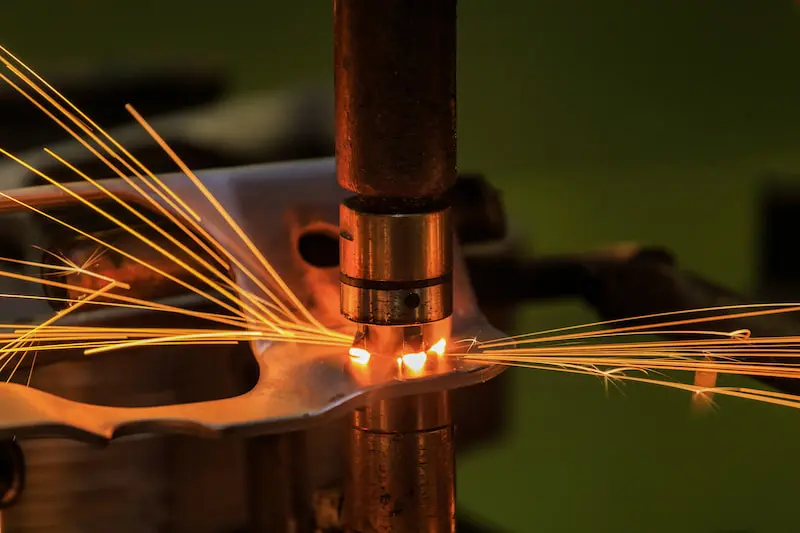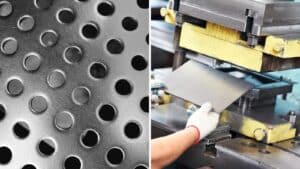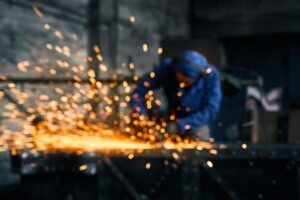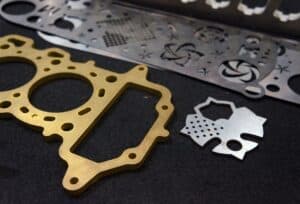Spot welding or resistance welding stands out among other welding types for its speed and precision when joining metal parts. By concentrating heat only at the contact points between electrodes and materials, it allows welding of very small areas with pinpoint accuracy. This makes it ideal for situations that require precision and speed, such as in electronics manufacturing.
Keep reading this article to learn all about the features, advantages, and uses of this technique.
What is resistance or spot welding?
Resistance welding is, simply put, a process of joining conductive metal materials by generating heat when an electrical current passes through the pieces to be welded.
It is also commonly known as spot welding, as one of its most frequent uses is to create weld spots to join metal sheets. It is a technique that enables highly accurate welding.
What is the spot resistance welding process?
This metal joining process is based on heating, known as the Joule effect, that occurs at the interface of the parts to be joined when high amperage and low voltage pass through two electrodes that apply pressure to the material. The heat generated melts the metals at the point of contact, producing a weld as they cool and solidify.
The parameters controlled in this process include: the current intensity, the duration of the current, the pressure between electrodes, and the material of the electrodes themselves. By adjusting these parameters, the optimal interface temperature is achieved to locally melt the materials without affecting the rest of the metal part.
How is resistance welding performed?
- First, the metal parts to be joined are placed between the electrodes of the spot welding machine. The electrodes must be clean and in good condition.
- Pressure is applied using hydraulic or pneumatic systems to keep the pieces in tight contact.
- Electric current is activated with a controlled intensity and duration.
- Heat is generated by the Joule effect at the contact points, melting the materials.
- When the current is cut off, rapid cooling and solidification occur, completing the weld.
- Finally, the welded parts are released by stopping the pressure.
Using automated systems with welding heads, appropriate electrodes, and DC power sources, it is possible to make repetitive welds with high precision and production speed—in other words, automated serial welding using a welding robot.
What materials are used for electrodes in spot welding?
The most common materials for spot welding electrodes are copper alloys with zinc, cadmium, beryllium, or other elements that provide high electrical and thermal conductivity, good mechanical characteristics, and high wear resistance.
Other alternatives include copper-graphite or copper-molybdenum alloys. The choice of electrode material depends on the base material to be welded and the technical requirements of the final joint.
An ideal electrode should offer maximum electrical conductivity, mechanical strength, and durability.
Where is resistance welding used?
Spot resistance welding has a wide range of applications in modern industry, especially in:
- Automobile manufacturing, for assembling and joining metal panels and sheets in bodywork, chassis, and structural components.
- Appliance manufacturing, for joining metal parts that form cabinets, bases, and internal supports.
- Assembly of electronic and electrical components.
- Aerospace and railway construction.
- Industrial product manufacturing such as boilers, tanks, containers, and piping.
- Machinery construction.
- Metal furniture manufacturing.
- Renewable energy industry, including solar panels, wind turbines, etc.
And many more uses that require strong, efficient, and repetitive welds between metal components.
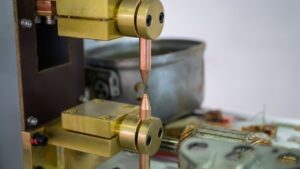
What materials can be welded with resistance welding?
Virtually all technical metals and alloys can be welded using the electric resistance welding process. Common examples include:
- Carbon and alloy steels of all types. These are the most commonly joined materials using this method.
- Austenitic, duplex, and ferritic stainless steels.
- Pure aluminum and its alloys with magnesium, silicon, or other elements.
- Electrolytic copper and several copper alloys such as brass and bronze.
- Pure or alloyed titanium.
- Nickel and its alloys.
More difficult-to-weld metals using this method include some non-ferrous materials like zinc, magnesium, or highly reactive metals. However, with special procedures, very good joints can also be achieved.
Advantages of resistance welding
Considering its wide possibilities and applications, resistance welding offers many advantages, including:
- High versatility, as it allows joining most industrial metals and alloys.
- Low equipment cost and inexpensive maintenance.
- No need for consumables such as shielding gases, fluxes, or filler rods/electrodes.
- High output and speed for serial production.
- Easy to automate with robotic equipment.
- Clean process, with no polluting gas emissions or smoke generation.
- Strong welds when performed with correct parameters.
- Suitable for joining thin materials.
- Minimal deformation of the base metal around the weld.
- Precise process control by adjusting electrical and mechanical parameters.
At Bericht we are specialists in all types of welding — discover our services.
Frequently Asked Questions about Spot or Resistance Welding
What is resistance welding and how does it work?
Resistance welding is a process of joining metal materials using heat generated by an electric current passing through the parts to be welded. Also known as spot welding, it applies pressure and current to melt and join metals at specific points.
How does the spot resistance welding process work?
The process involves placing metal parts between the electrodes of a welding machine, applying pressure to maintain contact, and passing electric current through them. The heat generated at the contact points melts the metals, and as they cool, they solidify to form the weld. Parameters such as current intensity, duration, and pressure are adjusted to achieve optimal welding.
What materials are used to make electrodes in spot welding?
Electrodes are mainly made from copper alloys that include zinc, cadmium, beryllium, or other elements to enhance electrical and thermal conductivity and wear resistance. Copper-graphite and copper-molybdenum alloys are also used depending on the specific welding requirements.
What types of materials can be welded with resistance welding?
A wide range of metals and alloys can be welded, including carbon and alloy steels, stainless steel, aluminum and its alloys, copper and its alloys (brass, bronze), titanium, and nickel. Although non-ferrous metals like zinc and magnesium are more challenging, effective welding is still possible using special techniques.
Which industries commonly use resistance spot welding?
Spot welding is widely used in the automotive industry for assembling car bodies and chassis, in appliance manufacturing, electronics for component assembly, aerospace and railway construction, and the production of industrial goods such as boilers and piping. It is also common in the renewable energy sector, including solar panels and wind turbines.
What are the advantages of resistance welding compared to other welding methods?
Advantages include versatility in joining most metals, low equipment and maintenance costs, high production speed and efficiency, easy automation, a clean process without emissions, strong joints, minimal deformation of the base metal, and precise control of the process by adjusting electrical and mechanical parameters.
